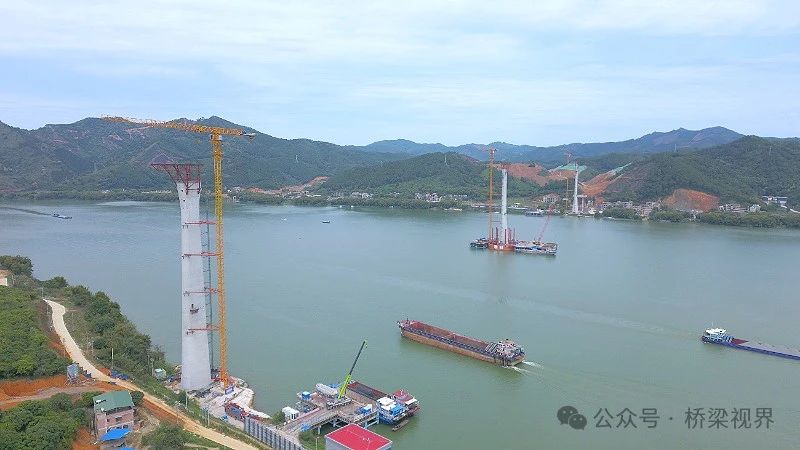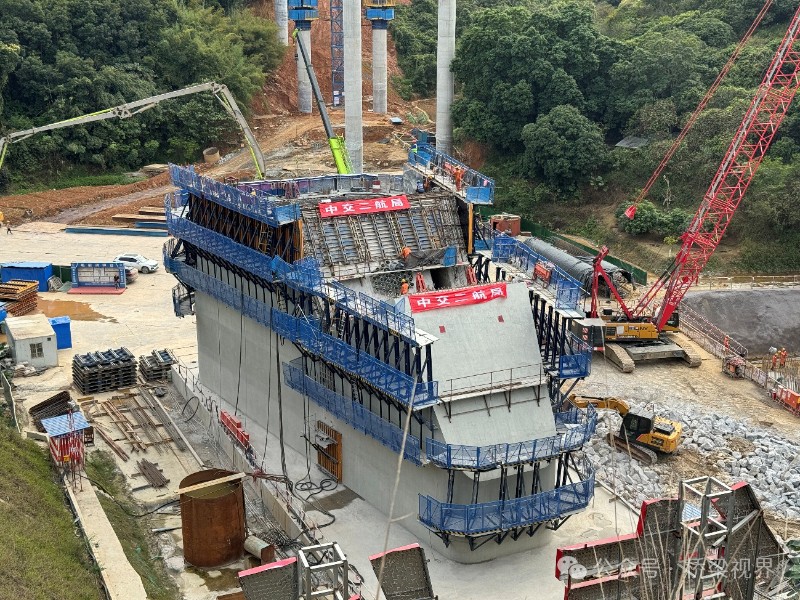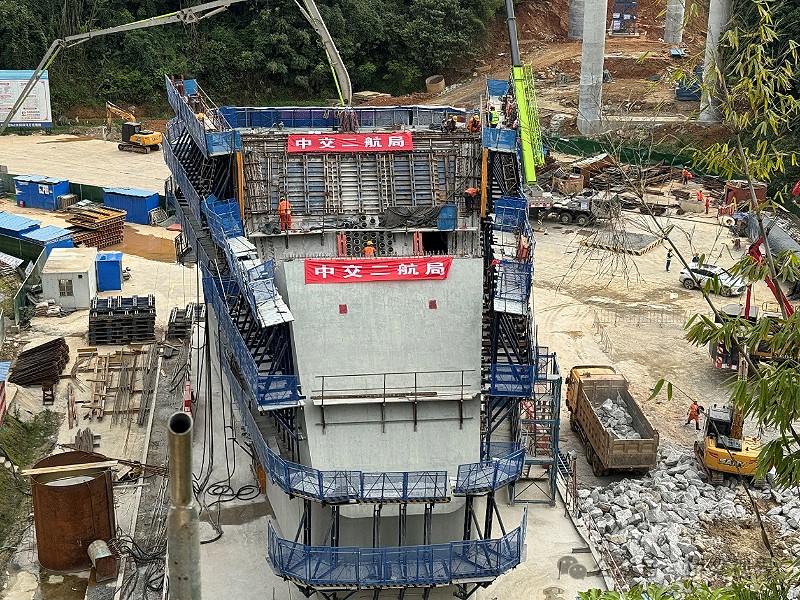On March 19th, the pouring of the first anchor block for the Cangrong Xiajiang Bridge of the Cangrong Expressway in Guangxi was successfully completed, laying the foundation for the subsequent installation of cable stays and steel beam erection for the upper structure of the main bridge.

The Cangrong Expressway mainline is 105.6 km long, designed with four lanes in both directions and a driving speed of 120 km/h. Among them, the Cangrong Xiajiang Bridge has a total length of 1,688 meters, located at the intersection of Wuzhou Tengxian County and Cangwu County in Guangxi. It is the key control project of the entire line. The two main spans are both 520 meters, and the three main towers all adopt a central single-column tower design. The central tower is 108.9 meters high, and the side towers are 108.8 meters high. It is a world-class large-span single-pylon three-tower spatial cable-stayed bridge and the first cable-stayed bridge in China to adopt a pile-wall combined structure for the anchor block foundation.

Since the bridge is a cable-stayed bridge with ground anchors, the anchor blocks are important force-bearing components. There are two separate anchor blocks arranged on the left and right sides on both the north and south banks of the bridge. The anchor blocks have an irregular shape and are poured in layers. The anchor block poured this time is the left span of the south bank, with a plane size of 33 meters long and 18 meters wide, and a total of 4,088 cubic meters of concrete poured for the entire anchor block. The anchor block consists of a foundation, bearing platform, and anchor body, like a huge “weight,” connecting the main cable to the foundation and transmitting the tensile force of the main cable to the foundation. The positioning of the cable stay pre-embedded pipes in the anchor block is an important factor affecting the installation accuracy of the cable stay system. To solve the problem of difficult positioning of the cable stay pre-embedded pipes in the south anchor block, the construction team specially designed a positioning support for the cable stay pre-embedded pipes. As verified, this positioning support can not only ensure that the installation accuracy of the pre-embedded pipes during the pouring of the rear anchor block meets the design requirements but can also serve as the top formwork for the rear anchor chamber, thereby ensuring the installation accuracy of the subsequent cable stay system.

In addition, the anchor bodies on both banks of the bridge have an innate “green and energy-saving” quality. They adopt a combined construction method of hole drilling and two-stage ditch construction with a pile-wall, avoiding the traditional large-scale excavation and concrete backfilling for anchor bodies, reducing excavation risks, shortening the construction period by 7 months, and achieving carbon reduction goals from the source. This provides valuable experience and reference value for the construction of similar pile-wall combined anchor block foundations in the future.
